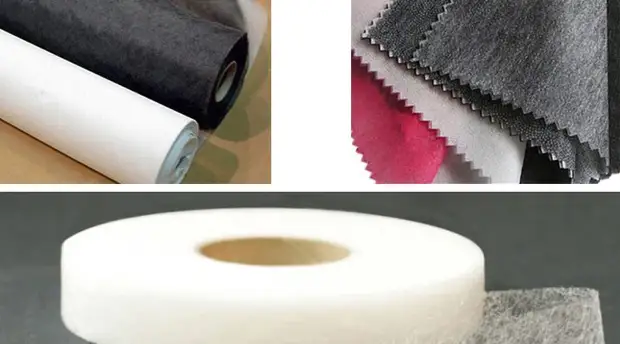
So that the clothes had an impeccable look and sat well, it is necessary not only a good pattern, but also the correct execution of such a stage in sewing, like duplication of the parts of the product.
What is duplication, why it is necessary and how to fulfill this operation - not only novice girls are set by these questions. What needs to be done to, for example, the collar was resistant and held the shape like in a bubble shirt or blouse? The answer is simple: you need to duplicate it - the gasket is shifted!
Duplication of parts of clothing provides their forms to the operation and care of the finished product, and also gives increased elasticity, eliminates the stretching and deformation of the tissue.
Usually duplicate the details such as cuffs, the details of the collar, board and the weld of the jacket or coat, the belt, valves, the bodice in the bustier dresses, the allowance for the cabin-zipper to avoid the waves and other small product details. And in products from knitted and elastic fabrics: a premium and a neck.
Layout plan
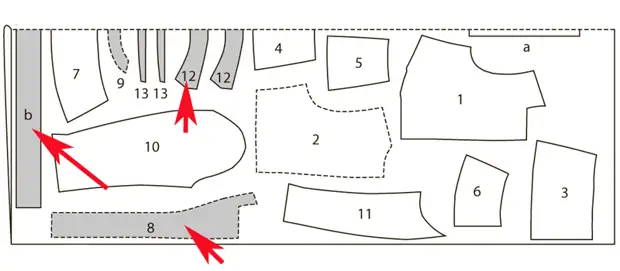
As a rule, duplication is performed throughout or part of the surface of the part. In the patterns of Burda, the parts that need to duplicate with a gasket glue material are highlighted in gray on the layout plan. All the fabrics differ in composition, density and thickness, therefore, the laying adhesive woven or nonwoven materials for duplication of parts will need to be selected according to a specific type of tissue. For example, that glue, which is suitable for palp fabrics, it is definitely not suitable for a silk chiffon. That is why the Burda instructions are always indicated which gasket is necessary for a particular model.
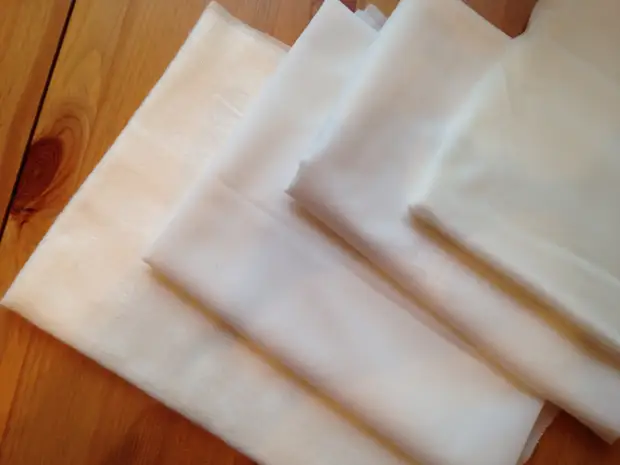
Of course, you can retreat from this recommendation if you sew a model from another fabric or if this type of fliseline is missing. Then choose duplicate materials suitable for your fabric.
Decatizing duplicate adhesive materials
Steel woven materials can give shrinkage, therefore, before proceeding with them, they must be decorted. If this is not done, the product during operation can be deformed in places where the parts are duplicated by non-jumped with a plug-in material.The woven laying materials are decatted as follows: soaked in warm water, then, without pressing, they give the track and dried in the collected form. The adhesive coating during soaking will not dissolve, since it is made on a polymer basis, which melts only under the iron during duplication.
Cutting pads
With a strip strip, observe the direction of the equity thread. Details from the gasket always exprobe in the same direction of the equity thread as the details of the fabric. This is especially important for woven duplicate materials, which are stable in the longitudinal direction and stretch in the transverse one.
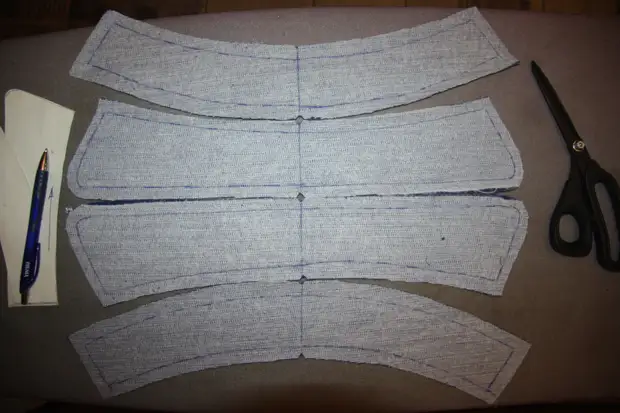
On the photo of the duplicated details of the collar
Details from the gasket are always cut with letters on the seams.
How to duplicate parts, affect the gasket
Before duplicate parts, practice the flap of the fabric to check whether the clutch clutch is firmly and how it keeps the form.
Flizelin gaskets are always afforded to the tissue from the wrong side of the part. At the same time, the gasket should not appear for the tissue, otherwise the glue weight sticks to the sole of the iron, and with the next iron, it will fall on the front side of the tissue, from which it will be impossible to remove it later.
During the rooting of the duplicate gasket, use the Peremnuty - the usual cut of the cotton fabric.
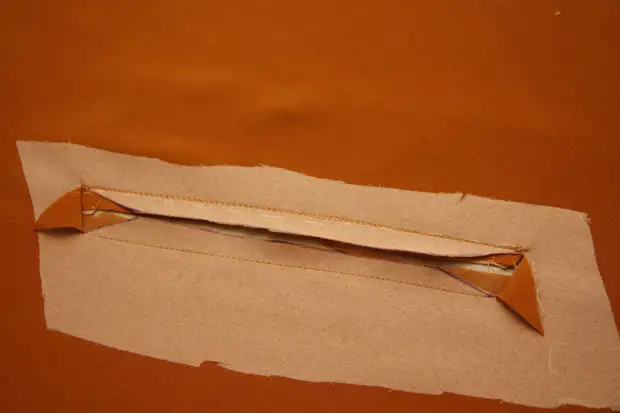
In the photo, the duplicated entry in the pocketposle of the roofing of the gasket is allowed to cool for 20 minutes.
Tips for duplication of details of clothing from Burdastyle.ru
For such small details, like a wrapper and collar, first cut the gasket with a large allowance for the seams and affect it to the wrong side of the fabric from which you will be cutting out the part. Then pin the pattern and now take the item with the necessary allowances.In order for the face of a soft and non-thick fingertip from the face of a soft and not thick finishes to the transition from the combined part on the non-jammed, the parts are duplicated with soft fliesline. Before starting work, spend this procedure on a small piece of fabric. If the transition is not noticeable, duplicate the parts boldly if the transition "appears" from the front side is not.
If you have already duplicated the fabric and the transition is visible, try to flip the edge of the glued fliesline to remove the track from the border.
For knitted fabrics, there are special thin laying materials that retain the elasticity of parts even after duplication. Since the knitwear is different in its composition and density, with a smooth or "fluffy" surface, take the rule - before duplicate the details of the product from such fabrics, always try on the flap. If, after this procedure, the tissue remained plastic and did not lose the form, it means testing successfully.
What fabrics do not duplicate or duplicate non-brace materials
Cloak and coupling fabrics are not duplicated with adhesive materials. But if nevertheless there is a need for this, instead of the usual adhesive, use a non-brace, for example organza. It is suitable for thin raincoat fabrics.
If it happened so that by ignorance you duplicated a dense cinema tissue, and later it went with bubbles from the front side, do not despair. Just reject the gasket material, but do it right:
- turn the cloak with the front side, the adhesive of the duplicating material under the action of the temperature softens;
- And only now tear the adhesive;
- Remove the remnants of the adhesive: flying the cloaking tissue through the path. Change the last to clean until all the remnants of glue disappear.
For duplication of wild silk parts, use or negleous gasket materials that are counted on the duplication area. In addition, for conventional silk fabrics, low-temperature phlizelin is used - it is thin and glued "dry".
Soft zhakaya fabrics, such as a letter, a logat, chalsel are sampled with a thin strain fluizelin, or are simpsed manually. They will not add thickness, but they will retain the plasticity and mobility of the fabric. In this case, the cloth will acquire stability in the sock, and the product is holding the form.
So why duplicate clothes details:
- To give the shape of the product and its separate items;
- to maintain the forms of the product during operation;
- to protect sections from stretching, especially the preach and the neck;
- To give persistence to such details as collars, cuffs, speaking by simple tongue so that they do not swear.
A source
